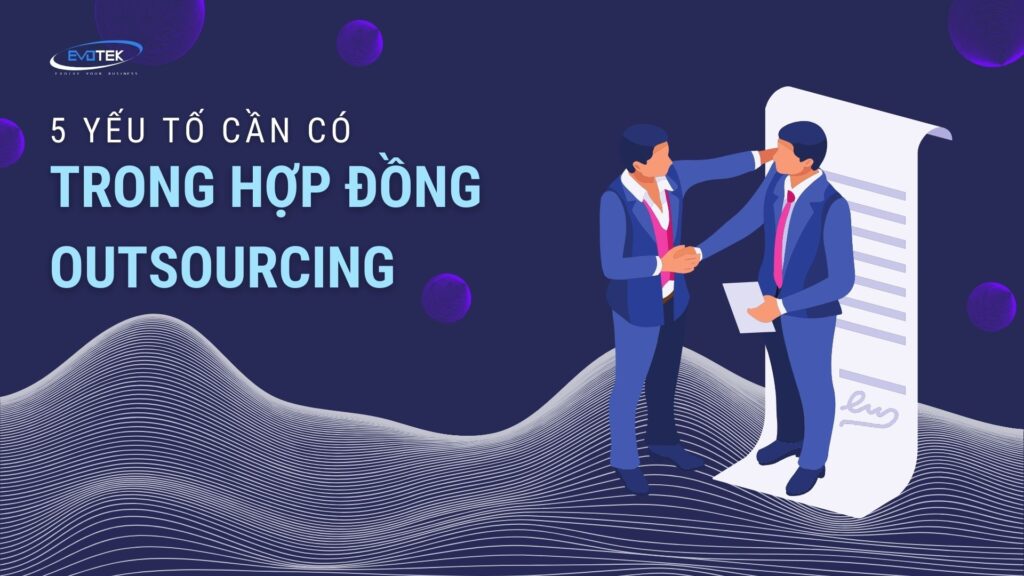In today’s business landscape, outsourcing has become a widely embraced practice. However, to ensure its success, it’s crucial to establish a comprehensive outsourcing contract. This agreement plays a pivotal role in clearly defining the responsibilities, roles, and obligations of both parties involved, ultimately fostering a smooth and efficient collaboration.
Benefits of Utilizing Outsourcing Contracts
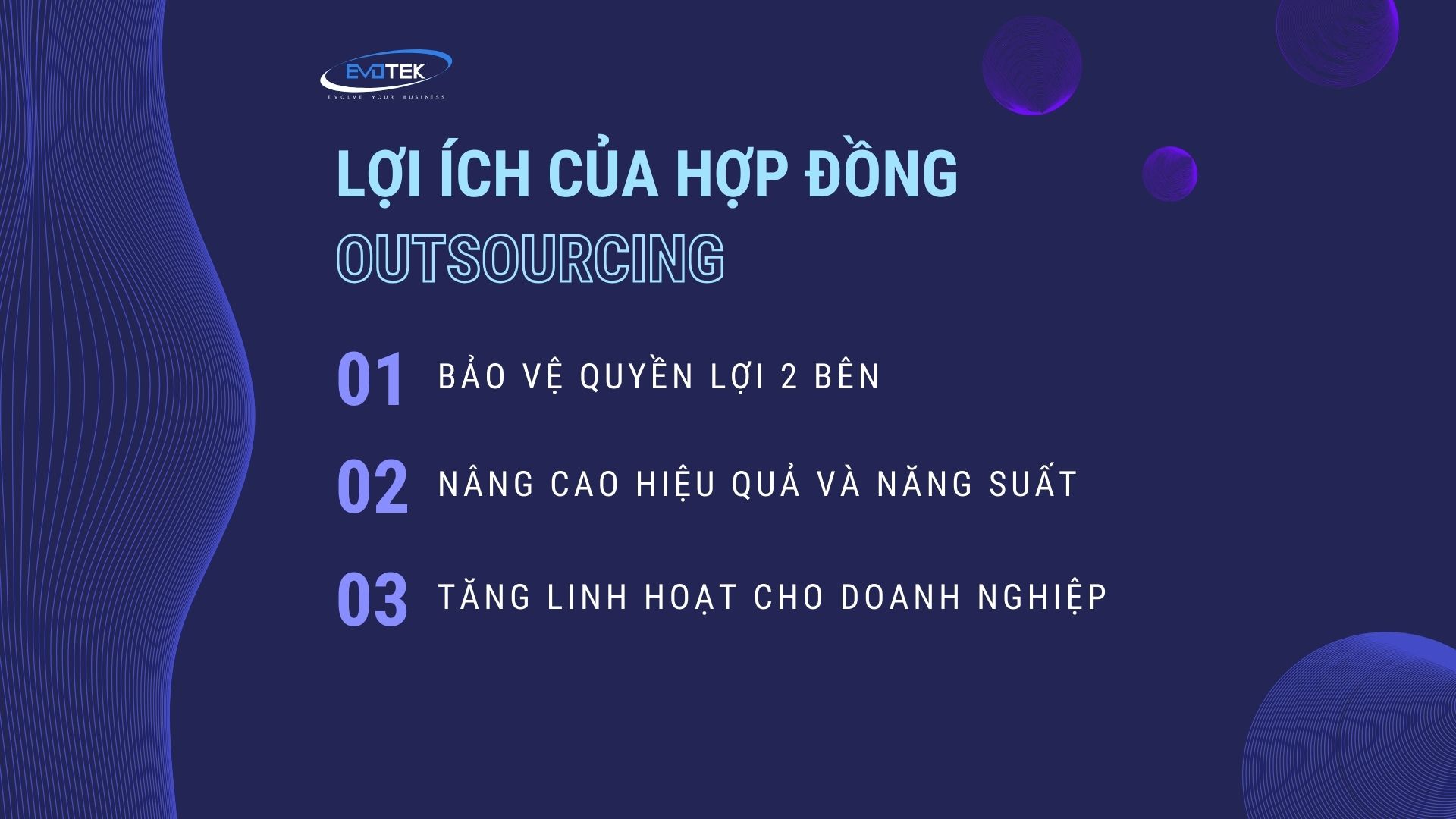
1. Protecting Interests:
Outsourcing contracts serve to outline the roles, responsibilities, and obligations of each party, thereby reducing the likelihood of disputes. Furthermore, they safeguard intellectual property rights, business secrets, and sensitive data, instilling confidence in both parties.
2. Enhancing Efficiency:
By delineating specific goals, work scope, deadlines, and budgets, outsourcing contracts enable parties to focus on tasks more effectively, minimizing redundancies and optimizing productivity. This structured approach is vital for project success.
3. Promoting Business Agility:
Outsourcing agreements facilitate the adjustment of operational scale in response to market dynamics, allowing businesses to swiftly capitalize on emerging opportunities and adapt to changes.
Outsourcing contracts are indispensable tools for maximizing the benefits of outsourcing. Businesses should carefully consider their outsourcing needs and establish robust contracts to safeguard their interests.
For businesses operating in Vietnam, adherence to Labor Code No. 45/2019/QH14, Commercial Code No. 36/2005/QH11, and Enterprise Code 59/2020/QH14 is imperative to ensure the seamless and effective execution of outsourcing processes
Project Scope and Security in Outsourcing Contracts
When drafting an outsourcing contract, clearly outlining the project scope is of utmost importance. Businesses must develop comprehensive documentation detailing specific SMART (Specific, Measurable, Achievable, Relevant, Time-bound) goals, product specifications, task breakdowns, estimated costs, and project completion deadlines.
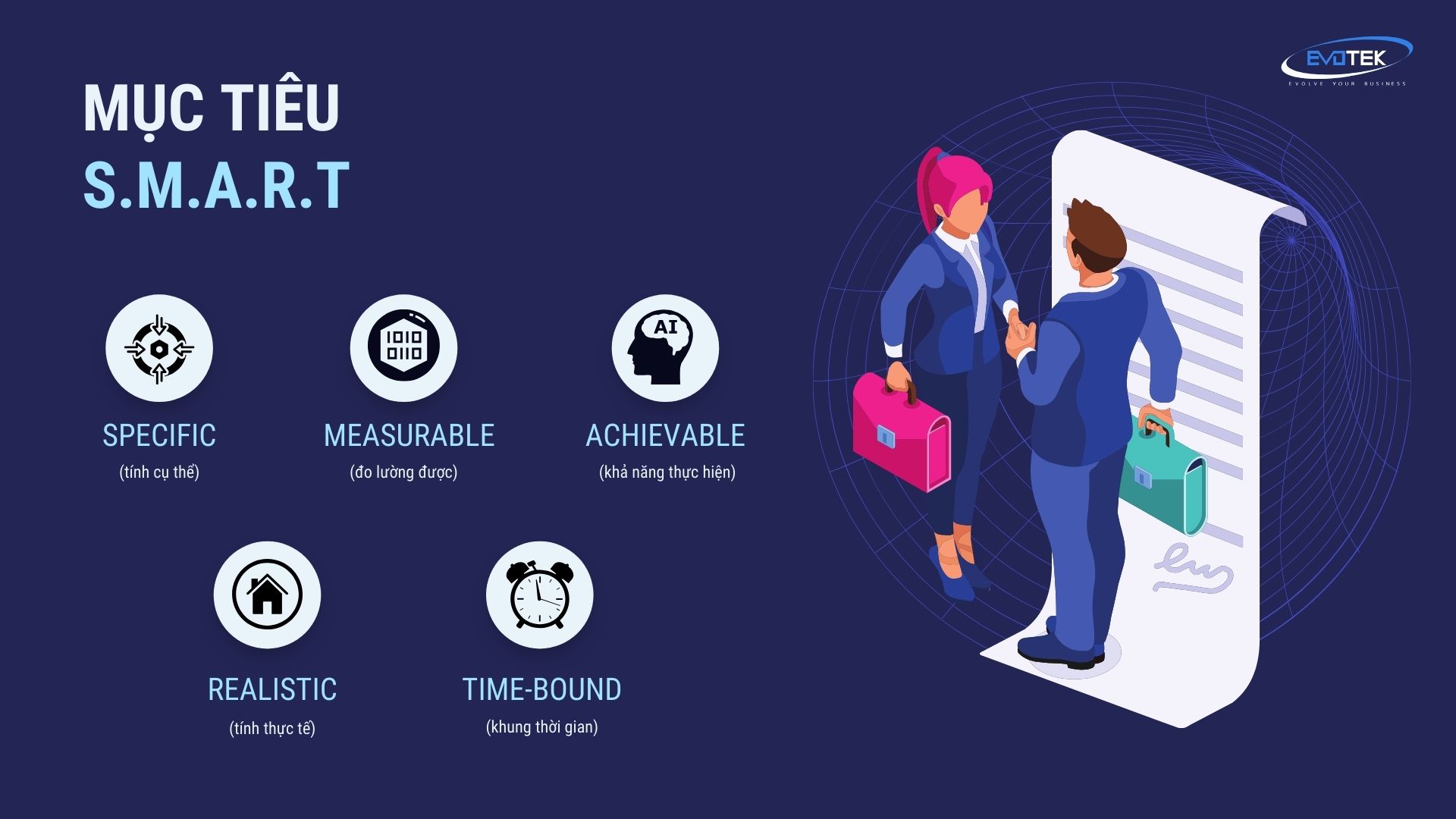
The project scope document can either be directly appended to the contract or referenced in a separate addendum. Incorporating the project scope into the contract streamlines the amendment process in case of any scope changes. Instead of modifying the entire agreement, parties can simply update the relevant appendix, expediting the process.
Furthermore, the contract should explicitly define procedures for modifying the project scope. This includes assessing the feasibility of changes, their impact on budget and schedule, and identifying decision-makers from both parties (e.g., requester, approver).
By default, the outsourcing service provider is typically accountable for executing operations within the agreed-upon timeframe. However, if the business desires the partner to assume responsibility for the project’s final outcomes, these obligations must be clearly articulated in the contract. For instance, a clause may state: “For each product delivered to the partner,[Tên nhà cung cấp] [Supplier Name] guarantees both quality and adherence to deadlines.”
Establishing a clear project scope upfront ensures all parties share the same expectations and possess a mutual understanding of the project. This fosters smoother implementation and coordination throughout the project lifecycle.
For every product delivered to partners, Evotek will ensure both quality and adherence to deadlines.
Asset Transfer
In certain outsourcing arrangements, businesses may need to transfer assets to their partners, such as telecommunications equipment, computer hardware, equipment rental contracts, and software licenses. This transfer typically occurs for two main reasons:
- Compliance with the service requester’s security standards, which may mandate specific devices for network access.
- Fulfillment of specialized equipment requirements that the outsourcing company may lack.
To formalize the process of transferring and returning these assets, a dedicated “Transfer of Technology Assets” clause should be included in the contract. This clause should detail asset names, receipt dates and times, expected payments, as well as regulations pertaining to asset preservation and usage.
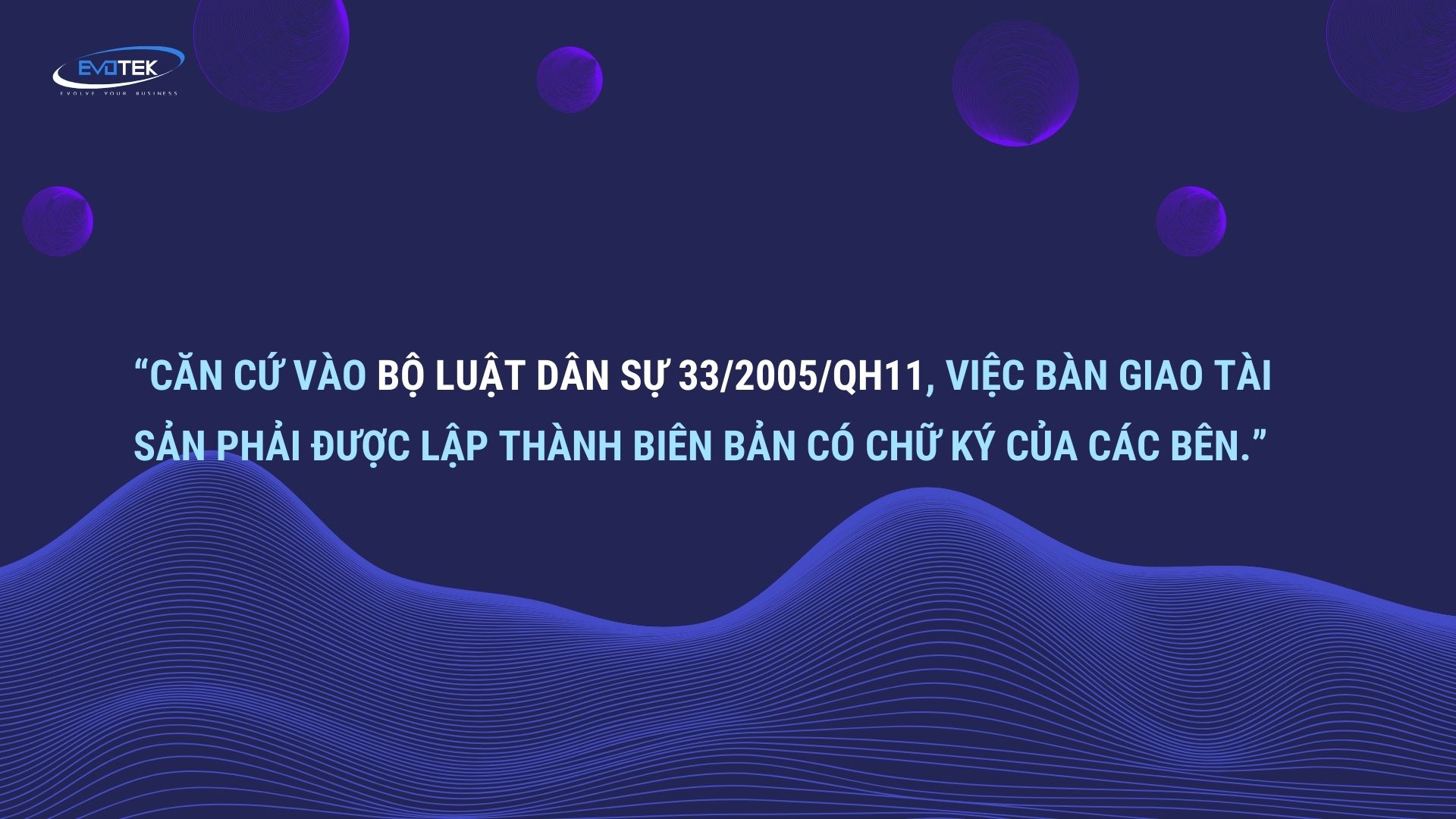
Per Civil Code 33/2005/QH11, property handovers must be documented in records signed by both parties. Clear documentation is essential for legal protection in case of disputes.
Therefore, establishing accurate and detailed documents and property handover records is of particular legal importance.
Non-Disclosure Agreement (NDA)
Protecting intellectual property and business secrets is a primary concern for businesses engaging in outsourcing. They are worried that their business ideas – the factor that creates a special competitive advantage in the market – will be stolen if shared with Outsourcing partners.
To address this concern, businesses should follow these steps: Research the reputation and capabilities of potential partners, including media reviews and information security certifications like ISO 27001:2013.
Arrange meetings to understand partners’ work processes and establish a foundation for a productive partnership.
Once a trustworthy partner is identified, establish a NDA to delineate security protocols.
As per Clause 2, Article 4 of Circular 10/2020/TT/BLDTBXH, an NDA should cover
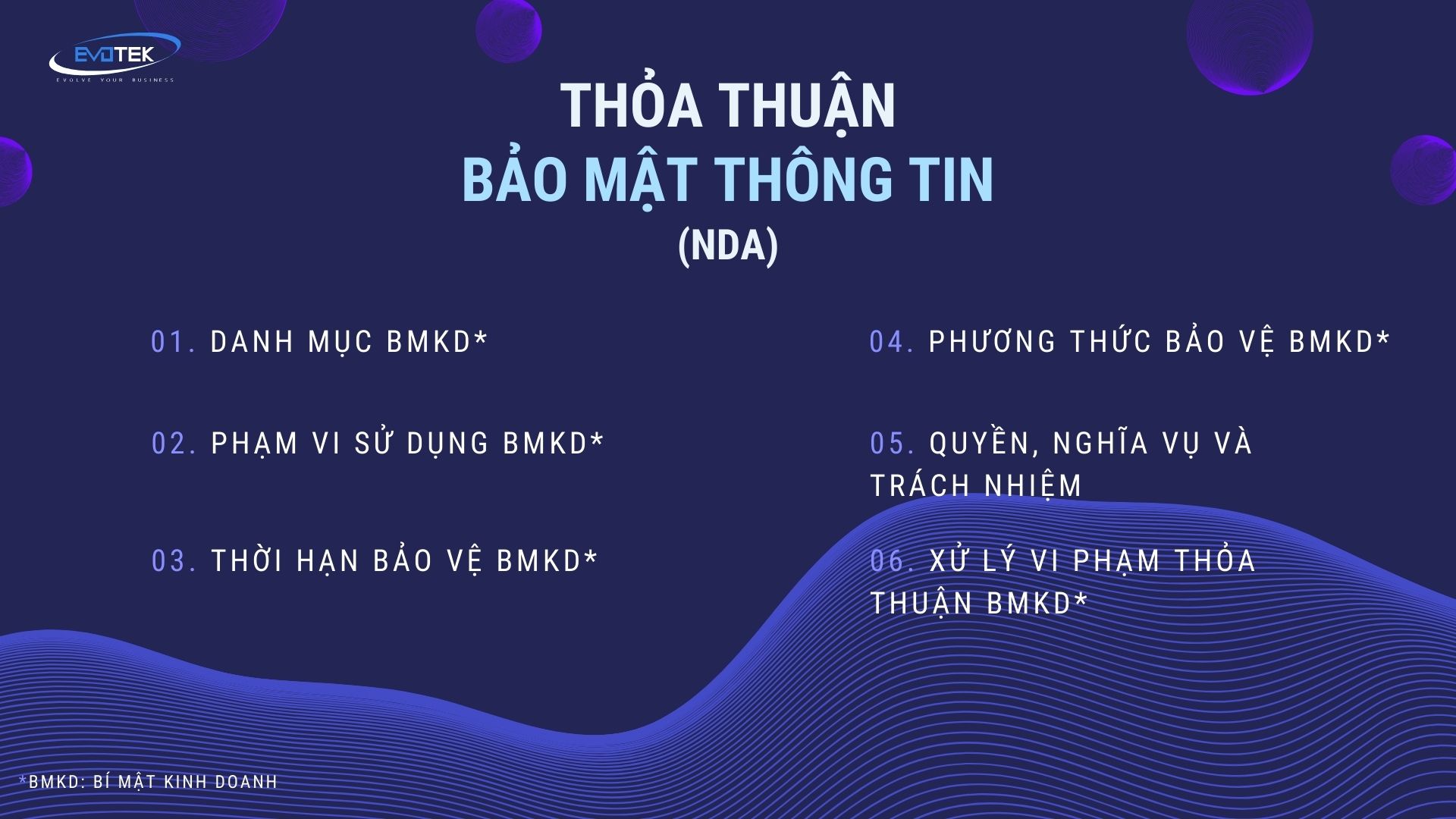
- List of trade secrets: Clearly define what information is considered a trade secret and should be protected.
- Scope of use of business secrets: Regulates the ways and purposes for which partners can use business secret information.
- Trade secret protection period : Determines the period for which trade secret information is protected, including after the contract ends.
- Methods of protecting trade secrets: Describe the technical and organizational measures applied to protect trade secrets.
- Rights, obligations and responsibilities of employees and employers during the term of protecting business secrets.
- Handling violations of business secret protection agreements: Specifying forms of handling in case of violation of the agreement.
By creating a comprehensive information security agreement, businesses can ensure the protection of sensitive information throughout their collaboration with outsourcing partners.
Product Ownership
Every business wants to take complete ownership of the finished product. In some outsourcing agreements, product ownership may be shared between the supplier and the outsourcing company. This can occur when:
- Outsourcing partners outsource or extend their existing software
- Suppliers provide maintenance and development services for products owned by another company.
Whether you are developing completely new software or just changing or expanding an existing product, outsourcing agreements need to clearly state ownership to avoid conflicts between the two parties in the future.
If the business seeks full intellectual property rights, the contract should state exclusive ownership. An example might be: “All intellectual property rights relating to the product, including patents, copyrights, trademarks and trade secrets, shall be owned solely by [Company Name] .” [Tên công ty]
However, in the case of shared ownership, the contract needs to clearly stipulate the scope and conditions of this sharing. (For example, a supplier may be allowed to use the product’s source code for internal research and development purposes, but may not sell or transfer that product to third parties.)
Clarifying intellectual property rights from the outset helps prevent disputes and ensures products align with customer interests
Dispute Resolution

Despite efforts to create thorough Outsourcing contracts, disputes may still arise during project execution. Should the Outsourcing partner breach contract terms or if the project deviates from plans, businesses require a legal recourse to prevent wastage of time and resources.
Incorporating an amicable settlement clause can help businesses navigate complex legal matters. This clause facilitates negotiation between parties, minimizing conflict risk and providing a structured approach to resolving issues.
Here are three common dispute resolution methods:
- Peaceful Resolution: This method prioritizes swift, cost-effective solutions that preserve partner relationships. Both parties collaborate to find mutually agreeable resolutions.
- Alternative Dispute Resolution (ADR): If direct negotiations fail, parties can involve a neutral third party. The mediator listens to both sides and makes a legally binding decision.
- Lawsuit: This is the final recourse if previous methods prove ineffective.
By clearly outlining dispute resolution methods in contracts, businesses maintain control over problem-solving processes, mitigating costs and risks associated with prolonged litigation.
Conclusion
Outsourcing contracts play an extremely important role in clearly defining the rights and obligations of the parties, helping to minimize the risk of disputes and ensuring smooth cooperation. By combining elements such as project scope, asset transfer, confidentiality agreements, product ownership and dispute resolution methods, businesses can establish a comprehensive and appropriate outsourcing contract. suits your requirements and needs.
However, to achieve the best results, businesses first need to choose a reliable and experienced Outsourcing partner. Cooperating with a valuable partner, businesses can be more assured of effective cooperation that is both fair and clearly defined according to the terms of the contract.
